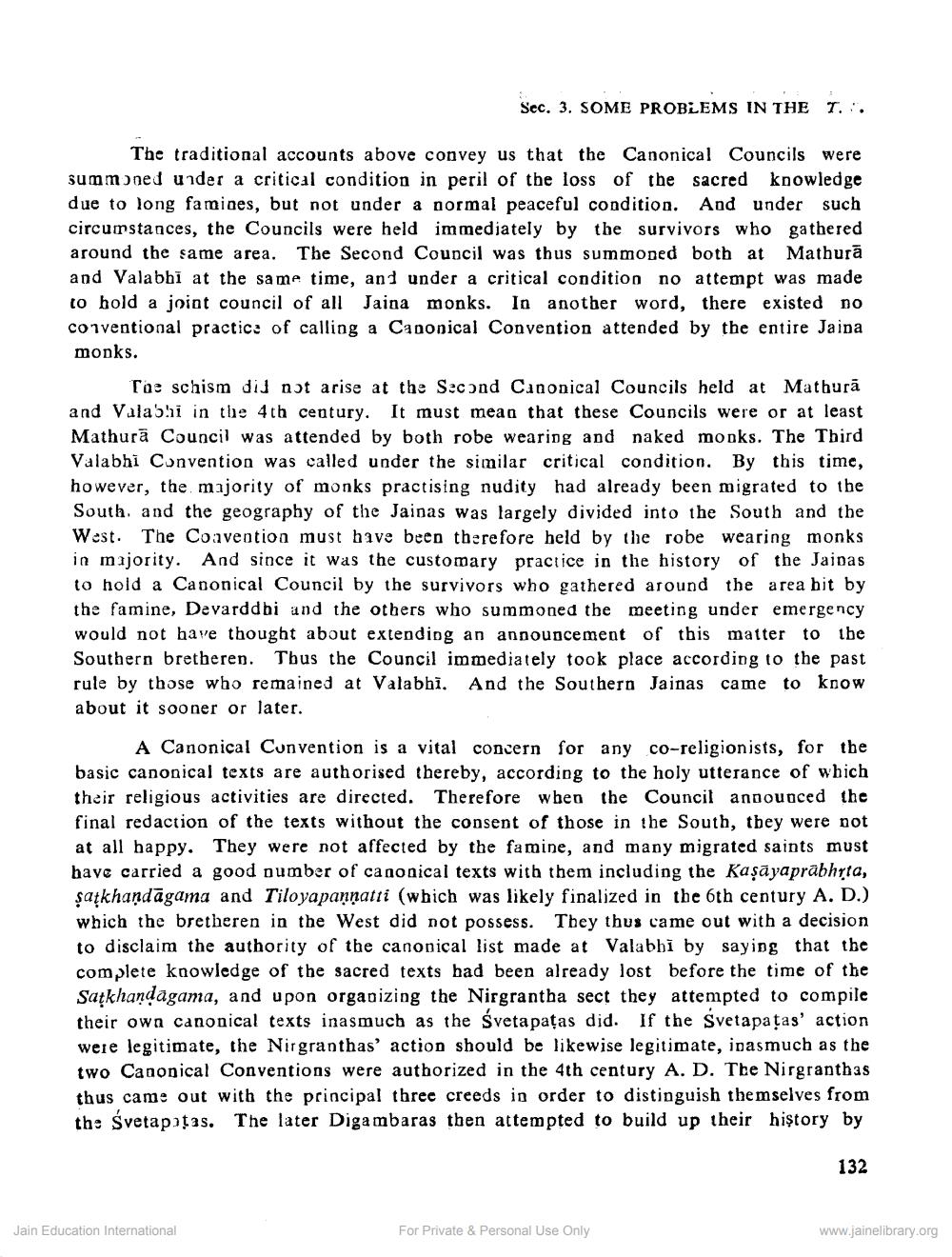________________
Sec. 3. SOME PROBLEMS IN THE T..
The traditional accounts above convey us that the Canonical Councils were summoned under a critical condition in peril of the loss of the sacred knowledge due to long famines, but not under a normal peaceful condition. And under such circumstances, the Councils were held immediately by the survivors who gathered around the same area. The Second Council was thus summoned both at Mathurā and Valabbi at the same time, and under a critical condition no attempt was made to hold a joint council of all Jaina monks. In another word, there existed no conventional practice of calling a Canonical Convention attended by the entire Jaina monks.
Toe schism did not arise at the Second Canonical Councils held at Mathurā and Valashi in the 4th century. It must mean that these Councils were or at least Mathurā Council was attended by both robe wearing and naked monks. The Third Valabhi Convention was called under the similar critical condition. By this time, however, the majority of monks practising nudity had already been migrated to the South, and the geography of the Jainas was largely divided into the South and the West. The Coavention must have been therefore held by the robe wearing monks in majority. And since it was the customary practice in the history of the Jaipas to hold a Canonical Council by the survivors who gathered around the area bit by the famine, Devarddbi and the others who summoned the meeting under emergency would not have thought about extending an announcement of this matter to the Southern bretberen. Thus the Council immediately took place according to the past rule by those who remained at Valabhi. And the Southern Jainas came to know about it sooner or later.
A Canonical Convention is a vital concern for any co-religionists, for the basic canonical texts are authorised thereby, according to the holy utterance of which their religious activities are directed. Therefore when the Council announced the final redaction of the texts without the consent of those in the South, they were not at all happy. They were not affected by the famine, and many migrated saints must have carried a good number of canonical texts with them including the Kaşāyaprābhrta, $atkhandāgama and Tiloyapannatti (which was likely finalized in the 6th century A. D.) which the bretheren in the West did not possess. They thus came out with a decision to disclaim the authority of the canonical list made at Valabhi by saying that the complete knowledge of the sacred texts bad been already lost before the time of the Satkhandagama, and upon orgaoizing the Nirgrantha sect they attempted to compile their own canonical texts inasmuch as the Sveta pațas did. If the Svetapatas' action were legitimate, the Nirgranthas' action should be likewise legitimate, inasmuch as the two Canonical Conventions were authorized in the 4th century A. D. The Nirgranthas thus came out with the principal three creeds in order to distinguish themselves from the Svetapățas. The later Digambaras then attempted to build up their history by
132
Jain Education International
For Private & Personal Use Only
www.jainelibrary.org




